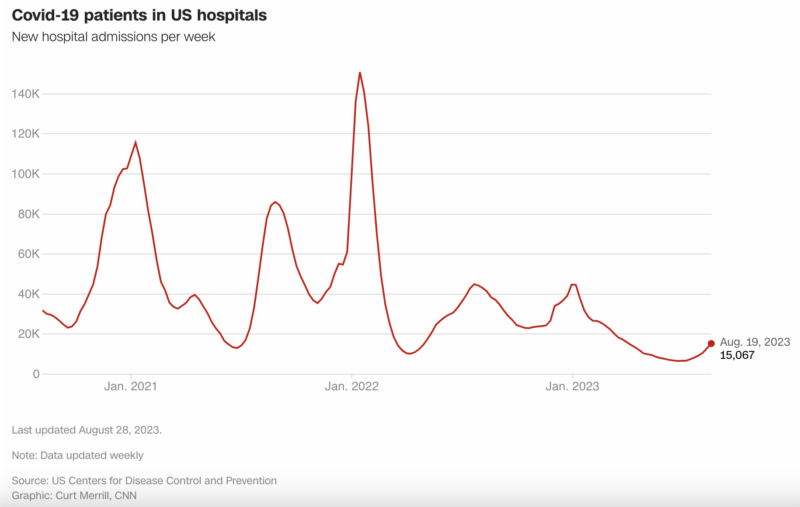
As summer draws to a close, COVID-19 is once again on the upswing in the United States.
While case numbers are significantly lower than in previous years, experts are concerned about a recent uptick of cases show the viral virus is back with a vengeance. They’re also concerned the true extent of infections are being underreported.
Several key indicators are pointing towards a rise in COVID-19 cases. Hospital admissions have nearly doubled in the past month, and test positivity rates have tripled in two months, according to federal surveillance data. And with flu season kicking up again soon, health officials are once again reminding the public to be vigilant with their health.
“There is more transmission out there than what the surveillance data indicates,” warns Janet Hamilton, executive director of the Council of State and Territorial Epidemiologists.
Rapid home tests and a decreasing public interest in testing have complicated the ability to accurately gauge current case counts. The Centers for Disease Control and Prevention ceased reporting aggregate COVID-19 case counts months ago, acknowledging that the data no longer represented the true extent of infections.
The University of Washington’s Institute for Health Metrics and Evaluation, which provided valuable COVID-19 case rate estimates and trend projections from 2020 to 2022, had to suspend its modeling due to the inadequacy of available data. Ali Mokdad, a professor at the university, explained the challenges in making predictions as the margin of error grew too large.
Hospitalization metrics were initially considered a reliable substitute for tracking transmission, but evolving testing practices and federal guidance have made historical data less useful. Hospital admissions for COVID-19, although lower than last year, have seen recent increases, but they still may not reflect overall transmission accurately.

“With every respiratory disease season — whether it’s COVID, whether it’s influenza, whether it’s RSV — those increases can impact different individuals in different ways, and there are always severe outcomes associated with respiratory disease season,” Hamilton said. “Now is the time for us to be practicing good respiratory etiquette. Now is the time for us to remind ourselves to think about our own individual health status and those individuals that we may be around.”






















